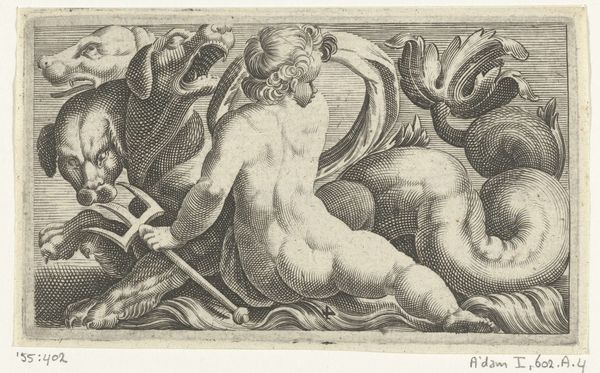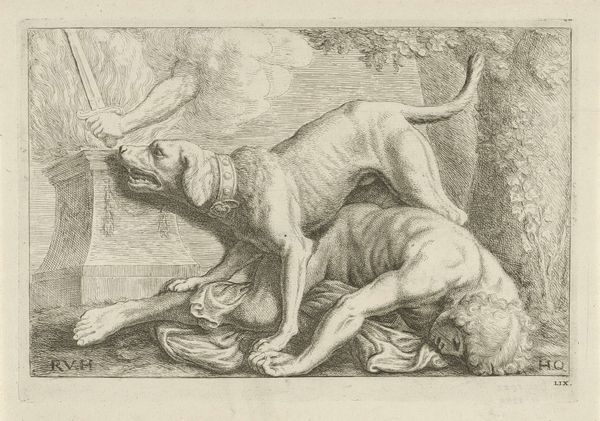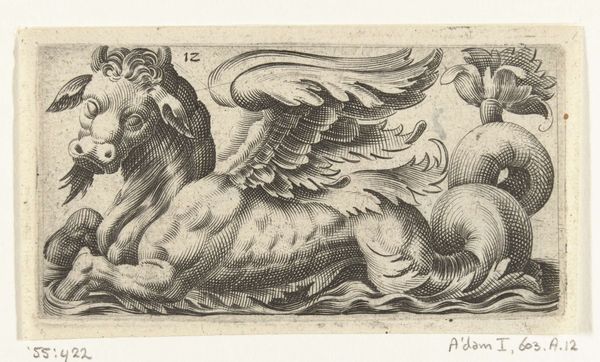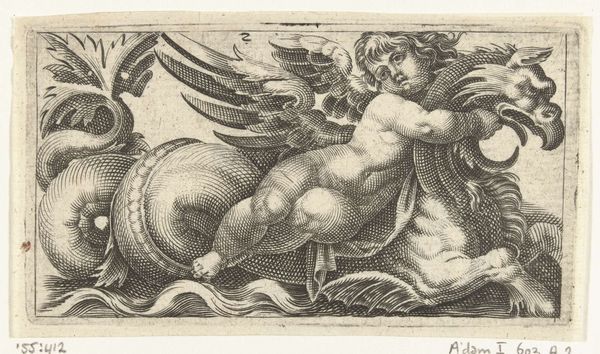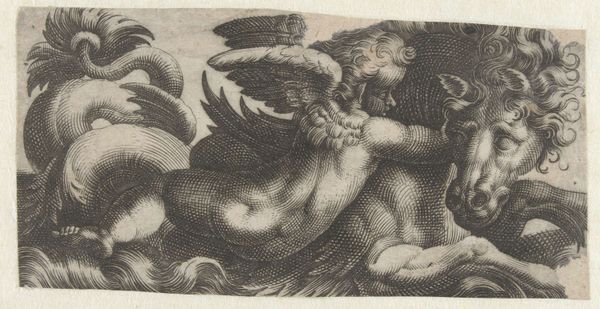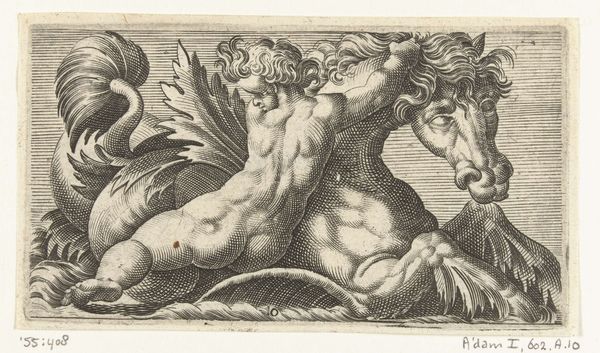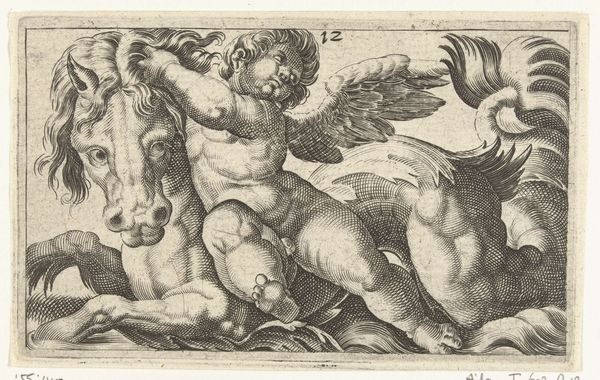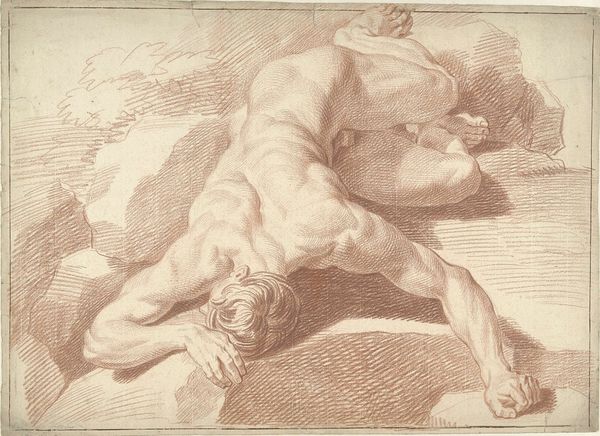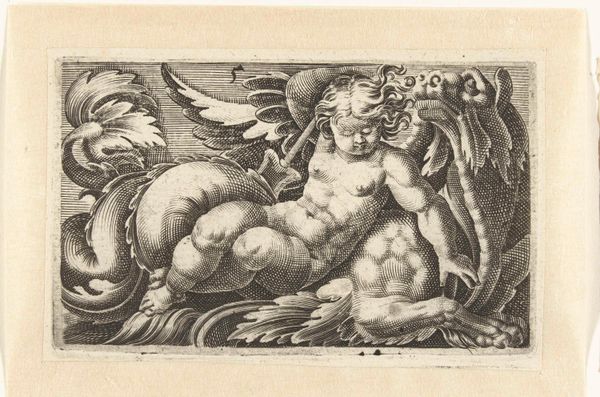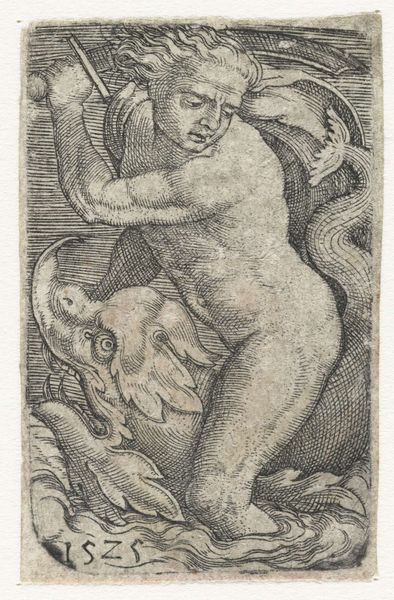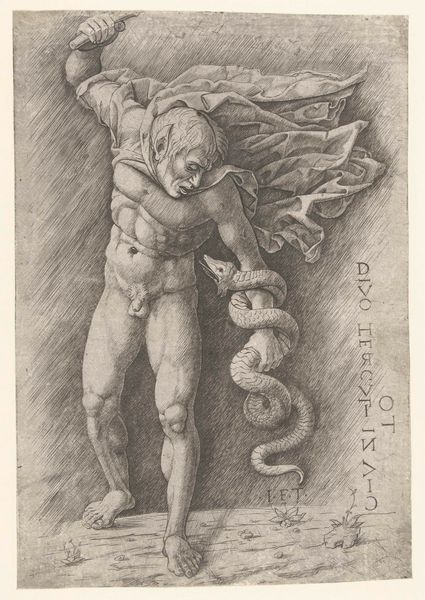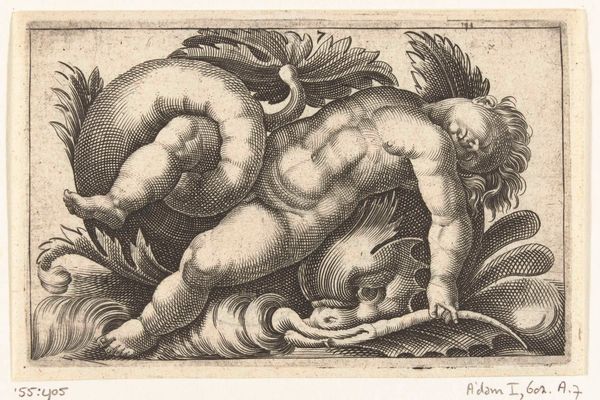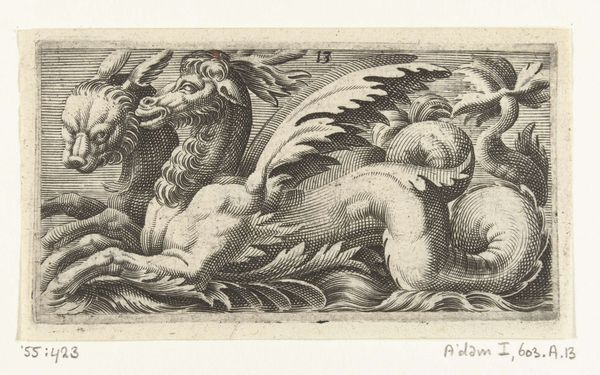
Reliëf met de val van Icarus boven de deur naar de Desolate Boedelkamer in het Stadhuis op de Dam 1663 - 1783
0:00
0:00
engraving
#
narrative-art
#
baroque
#
old engraving style
#
figuration
#
history-painting
#
engraving
Dimensions: height 207 mm, width 291 mm
Copyright: Rijks Museum: Open Domain
Hubert Quellinus created this relief of the fall of Icarus for Amsterdam’s Town Hall, likely in the 17th century. It evokes the classical world of the Greeks, but its real context is the Dutch Republic's Golden Age. The story of Icarus and his melted wings served as a warning against hubris, or excessive pride. This theme resonated in a society that valued hard work and social responsibility above individual glory. In this era, the Town Hall, now the Royal Palace, was the center of Amsterdam's civic life. Artists like Quellinus were commissioned to fill it with artworks reflecting the city's values and aspirations. To understand this piece fully, we turn to primary sources like period pamphlets and city records. These resources reveal how artists were contracted and how their work supported the moral and political climate. The study of this work helps us see how art is embedded in social and institutional structures.
Comments
No comments
Be the first to comment and join the conversation on the ultimate creative platform.
